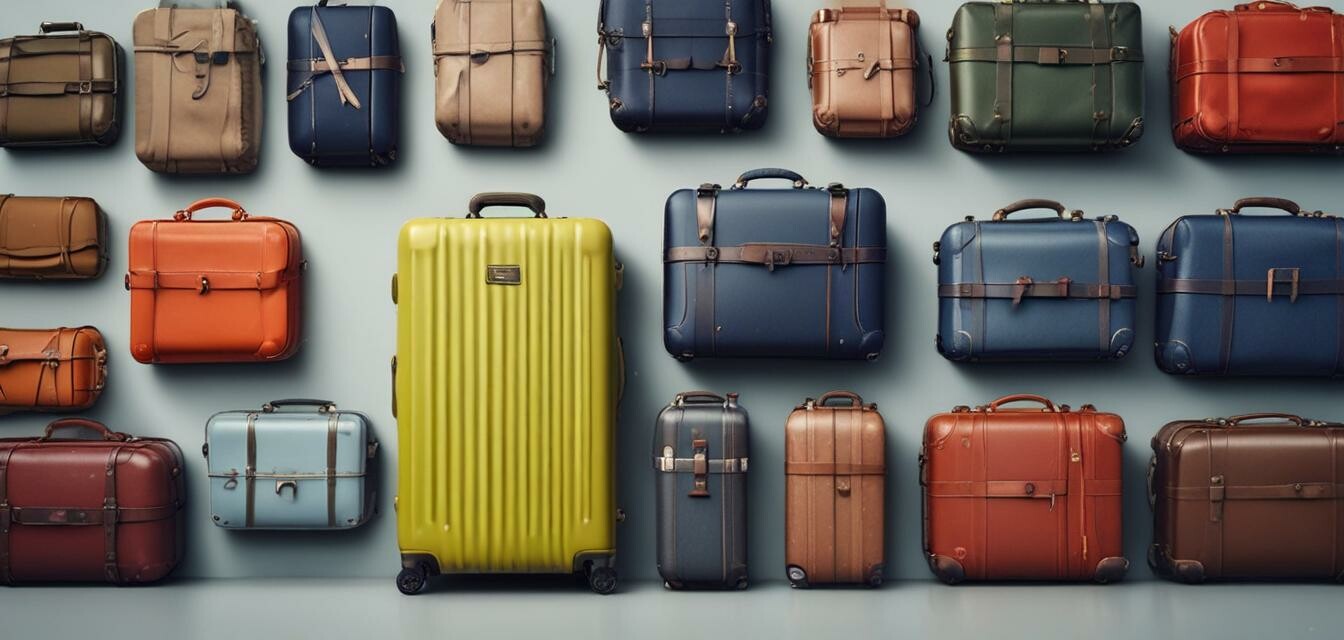
Luggage Basics: How to Care for Your Travel Gear
Key Takeaways
- Regular cleaning and maintenance extend the life of your luggage.
- Different materials require specific care instructions.
- Investing in luggage accessories can enhance protection.
- Proper packing techniques can minimize wear and tear.
- Know how to handle your luggage during travel for better longevity.
Proper care for your luggage is essential to ensure that it remains functional and stylish for years to come. In this article, we’ll guide you through the necessary steps to take care of your travel gear, covering everything from cleaning to maintenance. Whether you own carry-on luggage, check-in suitcases, or travel backpacks, these tips will help you keep your gear in top shape.
Understanding different materials
Luggage comes in various materials, each with unique care requirements. Below is a quick reference table to help you identify how to care for different types of luggage materials.
| Material | Care Instructions |
|---|---|
| Hard Shell | Wipe clean with a damp cloth; avoid abrasive cleaners. |
| Soft Shell | Vacuum or brush off dirt; spot cleaner for stains. |
| Fabric | Wash in cool water; air dry completely to prevent mold. |
| Leather | Condition regularly; clean with appropriate leather cleaner. |
| Polyester/Nylon | Use mild detergent and rinse well; air dry. |
Regular cleaning and maintenance
Cleaning your luggage may seem tedious, but it's vital to ensure its longevity. Here are some important steps to follow:
- Inspect your luggage: Before cleaning, check for any visible damage or wear.
- Remove contents: Empty all pockets and compartments for thorough cleaning.
- Clean exterior: Use a damp cloth and appropriate cleaner based on the material.
- Check zippers and wheels: Lubricate zippers and inspect wheels for debris.
- Air it out: Allow your luggage to air out and dry completely before storing it.
Packing tips to prevent damage
How you pack your luggage can significantly impact its condition. Here are some smart packing tips:
- Use packing cubes: These keep your items organized and prevent movement inside the suitcase.
- Protect fragile items: Wrap breakables in clothing or bubble wrap.
- Distribute weight evenly: Avoid placing heavy items on one side to prevent bending.
- Fill gaps: Use small items to fill gaps to prevent shifting during travel.
Travel accessories to consider
Investing in quality travel accessories can help in maintaining your luggage:
| Accessory | Benefit |
|---|---|
| Luggage Covers | Protects against scratches and dirt. |
| Padlocks | Provides additional security for your belongings. |
| Organizers | Keeps your items neatly stored and easy to access. |
| Lint Rollers | Helps keep your luggage looking clean and fresh. |
| Wet Bags | Separates wet or dirty items to avoid contamination. |
Proper handling during travel
The way you handle your luggage can greatly affect its durability. Here are some best practices:
- Avoid dragging: Always carry or roll your luggage rather than dragging it.
- Check weight limits: Make sure your luggage complies with airline weight restrictions to avoid excess strain.
- Use luggage tags: These ensure your luggage can be easily identified.
- Store properly: Keep luggage in a cool, dry place away from direct sunlight when not in use.
Conclusion
Caring for your luggage doesn’t have to be complicated. By following these simple tips on cleaning, maintenance, and proper handling, you can significantly extend the life of your travel gear. For more tips on managing your trips, check out our Travel Tips section for helpful advice on navigating your journeys.
Beginner’s Section
New to traveling? Consider these basic steps to get started:
- Choose the right luggage: Verify the sizes and types that fit your travel plans by exploring our Carry-On Luggage and Check-In Suitcases.
- Plan your packing: Create a checklist of essentials to ensure you don't forget anything important.
- Research your destination: Understanding local customs can enhance your travel experience.
Pros
- Increased longevity for your luggage.
- Enhanced travel experience with organized packing.
- Improved security and protection for belongings.
Cons
- Time-consuming to clean regularly.
- Initial investment in accessories may be needed.